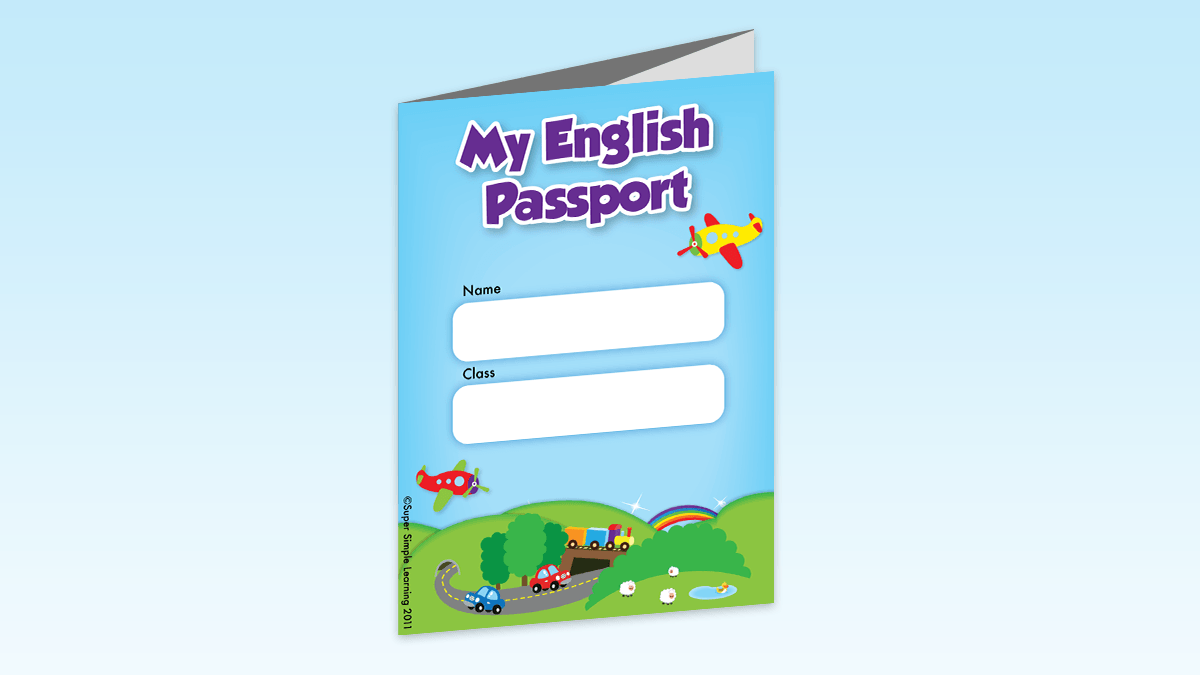
As teachers, we are always looking for ways to engage with our students. When teaching children in groups, it’s often difficult to find ways to interact with students individually using natural dialog. One tool that we’ve found particularly helpful is a student “passport”.
Students of all ages, from the very young to our older kids, look forward to this part of the lesson. Passports can be used in a number of different ways and are easy to incorporate into your lessons. Whether you see your students only once a week, or daily, you can easily make passports a fun part of your time together.
They are a great review tool and they become a fun momento for your students at the end of the year. You’ll find that many of your students will take great pride in the fact that they have a passport full of stickers by year-end. It’s also a great incentive for them to always come to class!
Download and print this free English Passport. It’s double sided, but if resources are an issue, you can print just the outside and leave the inside blank for stamps and stickers. If possible, print it on thicker paper so that it will last the whole year.
Here are just a few suggested ways that you can incorporate passports into your lessons.
Small Classes
- Gather passports at the beginning of class. You can make it a separate activity or incorporate it into another part of the lesson.
- For a separate activity, you can start by counting the number of passports, looking at the cover, pointing out the details on the front. Talk about forms of transportation, types of animals, etc.
- Use a choosing rhyme or game, such as “One Potato, Two Potatoes” to select the first student.
- Or, fan the passports out in your hand with covers facing you (like in a card game) and have the students pick the passports one at at a time.
- For very small classes or days when students are absent, we like to have a few spare passports on hand and assign them to some stuffed animals or puppets!
Large Classes
- Gather passports from students at the beginning of class and set them aside. As student’s finish their workbook or activity sheet, you can return their passport as you check their work.
- You can also split the group into teams or smaller groups and select several student’s to be your ‘passport assistants.’ Demonstrate the dialogue or language you would like them to practice and supervise as the ‘assistants’ interact with the other students in their group.
- Set up a stamp or sticker station so that students can get their own. Ask them a couple of questions and then send them to make their choice at the station. Of course, this will need to be for older students only.
Tips and Suggestions
- If you see your students more than once a week, you can select one day as passport day. This is a great opportunity to review the week’s lessons and do an informal assessment of student’s progress.
- Have students line up, have a stack of flashcards or picture cards with the week’s vocabulary. As each student comes to the front of the line, greet them and ask their name. Have them select two or three cards from the pile and identify them. Alternatively, you can select which words to ask the students. After their response, congratulate them and offer them a stamp. Present them two or three stamp or sticker choices that they will have to request by name.
- While students are waiting their turn in line, they can count how many stamps they have and review previous topics.
- Which color? Which stamp? How many? and Where? are just a few of the questions that you can ask students with their passports.
- Use seasonal or topic related stamps to help with review later on. Or how about using the letters of the alphabet? This gives students a real sense of accomplishment as they watch their letter collection grow!!
- For very young students, you might want to limit the number of choices of stickers or stamps. It can be a tough choice for a little one! And if things are taking too long, a gentle nudge in the right direction (3….2…..1….Let’s choooooooose….this one!) is fine!
Don’t forget to follow us on Twitter, Instagram, Pinterest, and Facebook!
Original content © 2011 Super Simple. Not to be reprinted without express written permission. Terms of Service.

